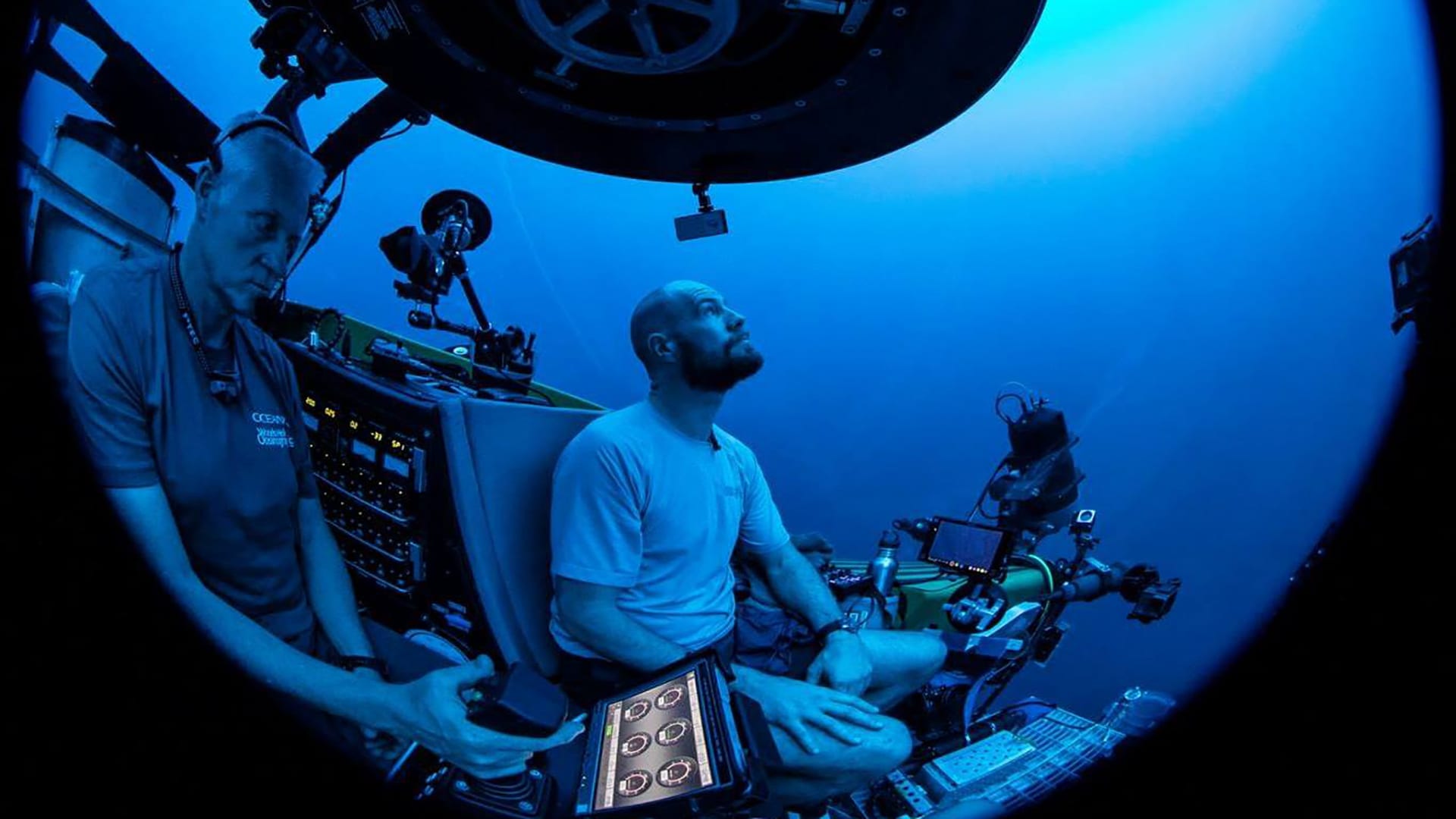Paul Caiger hunts for things that glow in the Ocean Twilight Zone
By Daniel Hentz
Paul Caiger is a fish biologist, marine photographer and postdoctoral investigator at Woods Hole Oceanographic Institution (WHOI). A New Zealand native, Caiger was heavily immersed in SCUBA diving culture while working toward his Ph.D. in marine biology and reef fish ecology at the University of Auckland. He came to WHOI as a member of Joel Llopiz’s fisheries lab, where he studies pelagic fish larvae and employs his photographic expertise to put a face to the newest frontier in marine studies, the Ocean Twilight Zone: a deep and mysterious marine stratum that hosts the world’s largest daily animal migration. From the ghoulish grimace of the viperfish, to the bejeweled beauty of the strawberry squid, Caiger’s marine portraits have helped shine a light in this dark but critical ocean zone.
What is your earliest memory of interacting with the ocean?
My earliest memory of the ocean was way up in the Northern Hemisphere. I lived in Ireland when I was a kid. My family would stay in a house on the coast and I would go play on the shoreline and explore the rock pools that were there. That was my first taste of the ocean as a kid on the wild west coast of Ireland.
I’ve always been a fish lover, but it wasn’t marine species at first. As a kid, I was catching freshwater sticklebacks, eels, and things like that. It wasn’t until I came to New Zealand at the age of 10 that my relationship with the ocean manifested. Apart from snorkeling, I hadn’t really interacted with the sea until then. In New Zealand, of course, it’s just an ocean paradise, so by 16 or 17 years old I started to do a bit of SCUBA diving. One of my first dives was a trip to Australia’s Great Barrier Reef, which was really cool. I was really quite changed.
You’ve taken some amazing images of creatures that inhabit the ocean twilight zone. How did you marry your skills in photography with your career as a marine biologist?
So, no surprise, I started doing photography while diving. It was sort of a natural progression from seeing things underwater to wanting to capture and share them with others. It became an even more gradual transition from doing it as a hobby to doing it professionally. During my graduate schooling, I started writing articles for dive magazines and used photos I had taken underwater. That was the first time I really made money for it in a professional setting. I had been diving avidly with other photographers in New Zealand. We dove all the reefs and then started exploring open ocean by day. It wasn’t long before we began hearing things about the vertical migration of creatures from the mesopelagic that takes place over night. We thought, “Hey we’re already doing open water diving by day, let’s come out at night!”
At the time, not a lot of people were doing that––some in Hawaii, some in South Asia. And while we’d rarely see true twilight zone creatures, we certainly saw some deep-sea squid, which was quite cool. Back then, my motivation was 100% pure interest. Since I came to America and the Ocean Twilight Zone project came along, I decided to tailor the macro photography skills I’d learned to try and capture these animals that we brought aboard the ships.
Click on the thumbnails below to embark on a visual journey.
You dove off OceanX’s M/V Alucia in their submersible Nadir to explore a bit of the Ocean Twilight Zone. What did you learn from that experience?
The biggest takeaway for me from that dive was how sparse it is down there. It’s not like in shallow or coastal water where you’ll see schools of fish going by and a lot of life in the water column. We did see life, but small organisms that were really spread out from one another. For me, that highlighted a few things: a) living down there is tough because it’s hard to find things to eat, and b) for people who want to harvest from there in the future, it will be quite costly to pull up a net full of fish.
The light levels also fascinated me; there’s always just a dim glow, even down hundreds of meters. You’re aware of that of course––it’s called the ocean twilight zone for a reason––but to see it in situ was quite different from observing creatures brought aboard a ship. And the organisms down there have adapted to blend into low light using their photophores, so sometimes you’d only see a silhouette pass by.
What drew you to WHOI?
It’s this awesome blend of science and engineering, unmatched by any place I’ve been to. As a scientist, you can have a question that only an engineer can sort out, and here at WHOI you can easily just walk across the road to find your answer. It’s also been great for me to do something different with oceanographic research. I come from the world of coastal research, where we dive off small boats on reefs and kelp forests. Now, I’m working on big research vessels. I’d never been a part of such big projects (like the Ocean Twilight Zone) involving multidisciplinary research, as I now am at WHOI. For instance, just going out to sea it’s not unusual to see 18 engineers, scientists and students all on one ship collaborating with one another. It’s amazing being in the middle of so many curious minds.
This research is part of the Woods Hole Oceanographic Institution’s Ocean Twilight Zone Project, funded as part of The Audacious Project housed at TED.

